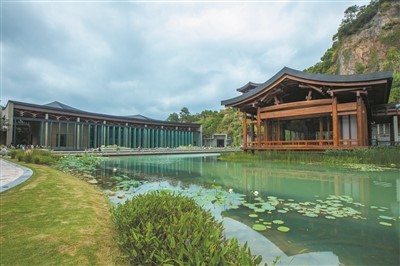Wang Shu, the world famous architectural designer, showed up at Hangzhou Branch of the National Archives of Publications and Culture (NAPC Hangzhou Branch) yesterday afternoon to introduce the design and construction of the Song-style architectural complex to the audiences.

The site of the NAPC Hangzhou Branch was originally an ordinary abandoned mine. Centered on the objective of “constructing a building complex for book collection with Song-style garden”, Wang Shu and his team extracted the characteristics of Song-era architectures and the essence of Song-style aesthetics from garden and landscape paintings of the Song Dynasty. They made full use of the rocks and stones of the abandoned mine and integrated them with the architectures of the whole garden through comprehensive restoration to establish the layout featured by pavilions built against hills, corridors encircling around hills, pond chiseled in situ and water diverted from outside into the garden.
With painstaking efforts and thousands of design manuscripts, the team endeavored to interpret and present the concept and elegance of the architecture, garden and landscape paintings of the Song Dynasty with modern language. As Wang said, “modern style Song elegance” was the core of the design. As no garden of the Song Dynasty has survived to date, it was a challenge to convert the images in the paintings into large-scale architectures in real sense. He proposed five principles of the architectural concepts during the creation. For example, the principle of nature-oriented construction can maintain the original natural landform and plantation to the maximum extent and ensure a delightful contrast between the architecture and the landscape.
